Interview conducted in Lisbon, on February 23rd.
Welcome to the world of Pareidólia, where each piece is an invitation to contemplation and the discovery of beauty in the unexpected.
Tatiana, the creator behind the Nuvem collection of blue and yellow coffee cups and saucers, shares her journey, inspirations, and projects in this interview.
Get ready to explore a world where creativity and spontaneity come together to create unique and astonishing works.
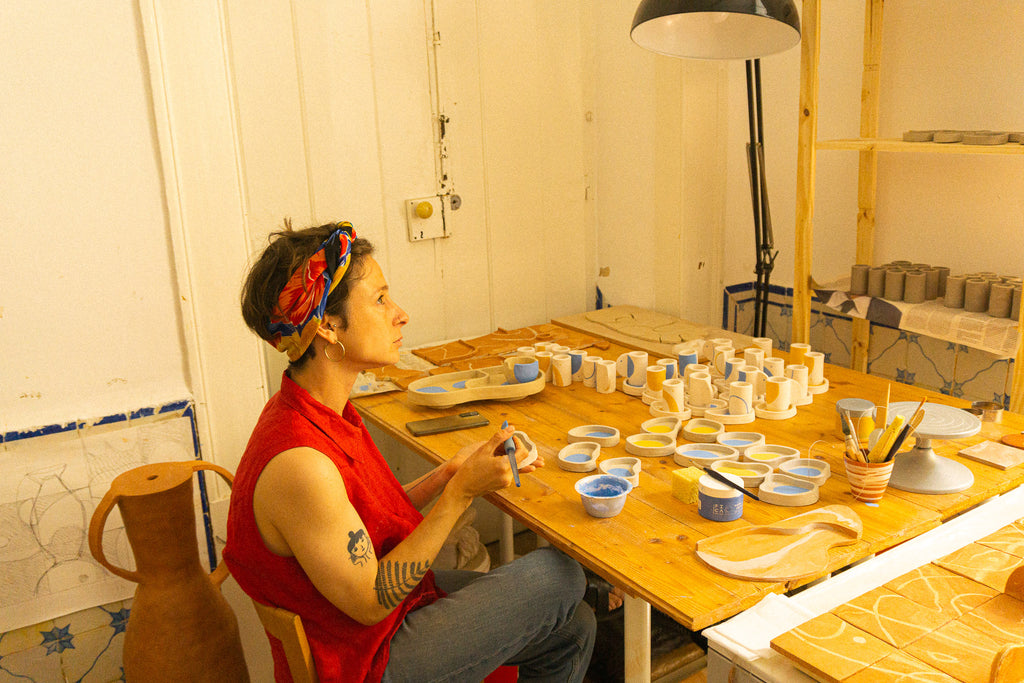
Can you introduce your brand, Pareidólia?
« Pareidólia was born last year in response to the disruptions caused by the health crisis. I was working at the Belem Museum in Lisbon at the time, but like many others, I had to rethink my professional future due to the impact of the pandemic on the cultural sector. That's when I decided to seize the opportunity to fulfill a dream I had kept in the back of my mind for several years: working in ceramics. In high school, I took ceramics classes and absolutely loved it. Once in university, I set ceramics aside a bit, although I continued to occasionally attend ceramic workshops in Lisbon. I always had a deep attachment to this discipline and knew that I wanted to pursue a hands-on craft. That's how Pareidólia was born. »
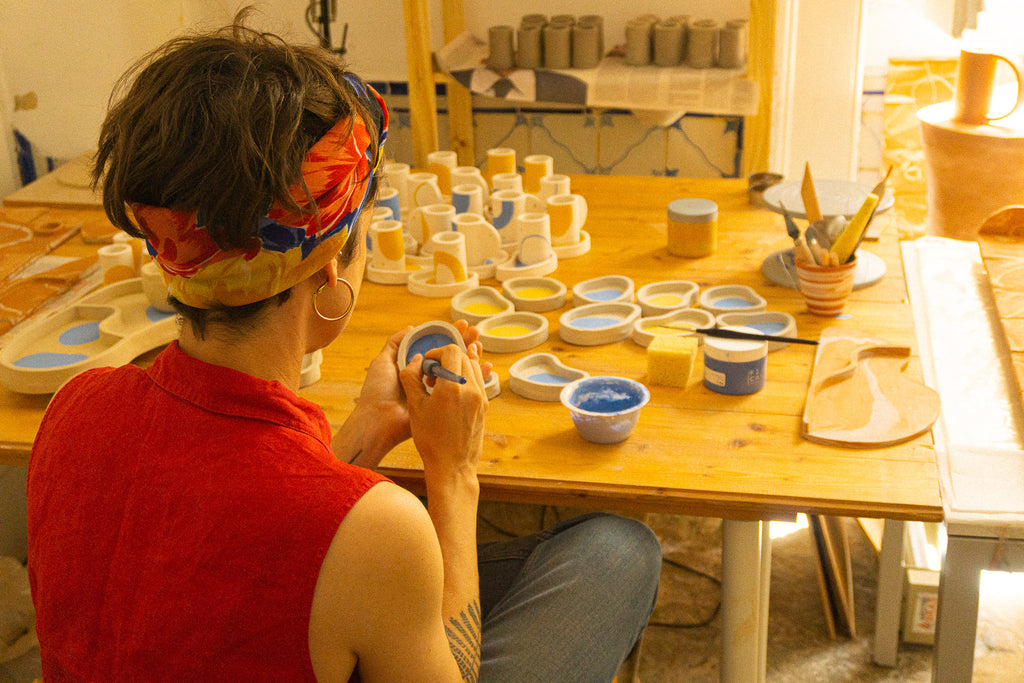
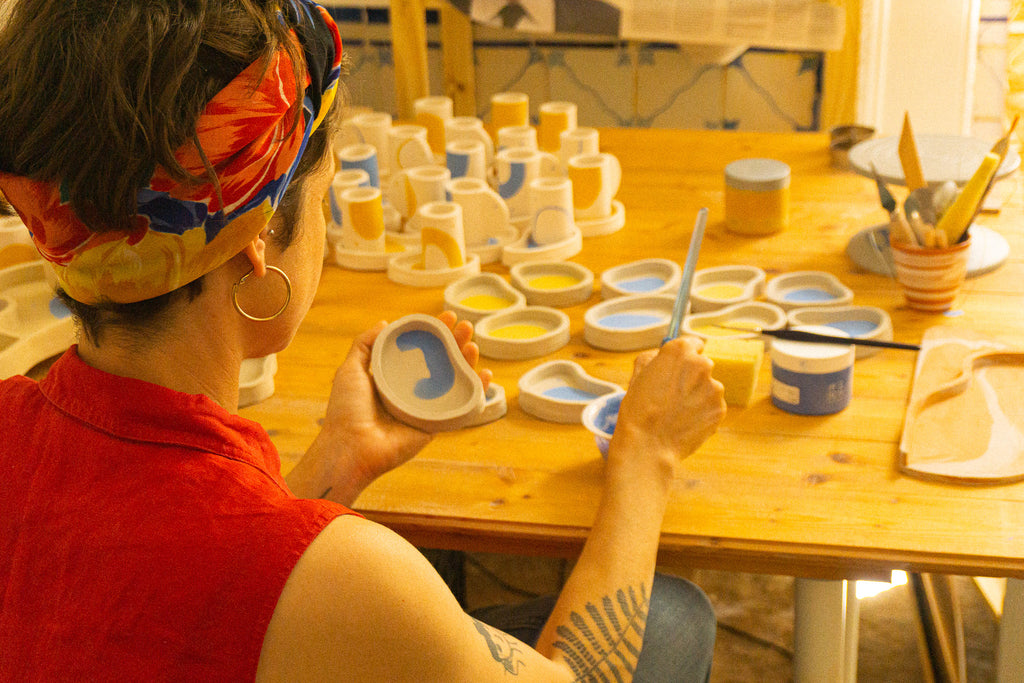
Why the name « Pareidólia » ?
The name "Pareidólia" was chosen for a specific reason. The term "pareidolia" refers to a psychological phenomenon where our brain perceives a significant pattern, often a human or animal form, in random stimuli such as clouds, inkblots, or patterns on inanimate surfaces. It can be considered a perception error, as the perceived pattern doesn't actually exist but is created by the brain trying to find meaning in ambiguous or chaotic stimuli. Pareidolia is often associated with sensory experiences such as music or meditation, but it can also occur spontaneously in everyday life.
« At the beginning of Pareidólia, I used to sketch all my ideas in a notebook, noting down each measurement. I had a precise vision of my creations and strived to execute them according to my notes. However, as I worked with clay following this process, I quickly realized that the final result often differed greatly from what I had envisioned on paper. I then abandoned the rigid method of planning in my notebook, opting instead to "draw" directly with the clay. That's when I discovered the concept of pareidolia, where the final outcome depends on individual interpretations. This philosophy became the cornerstone of my work, offering me the freedom to create without limits or constraints. »
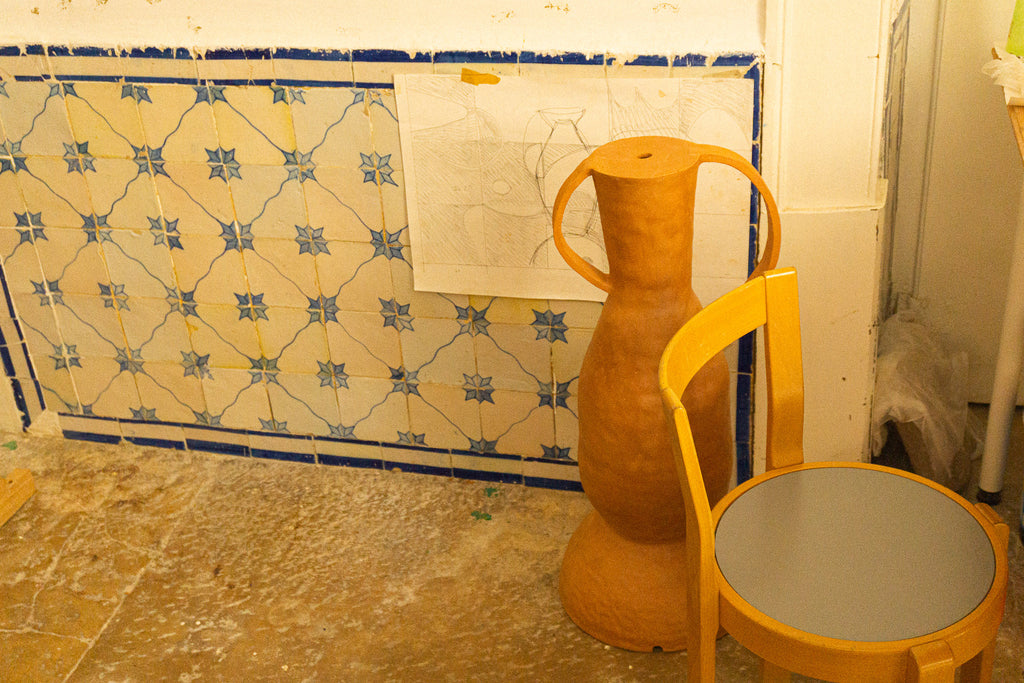
What are your inspirations?
« My greatest inspiration lies in the concept of uniqueness, whether it's in objects or people. When I walk down the street and encounter a distinctive face or have an interesting conversation with someone, I unconsciously absorb those experiences and incorporate their differences into my work. However, even with a clear vision in mind, the final result often deviates from my initial expectations because I also allow myself to be guided by mistakes and experimentation. I constantly strive to create organic and non-rigid forms that reflect the diversity and unpredictability of our world. »
Why did you choose the colors blue and yellow?
« I chose the colors blue and yellow for several reasons. Firstly, I have a strong affinity for the color blue. When I was working on the prototypes of the coffee cups, I used blue as the dominant color in my designs. Yellow naturally came to me, evoking the image of the sun. Blue and yellow are complementary colors that blend well together. This combination creates a dynamic and vibrant contrast that adds liveliness and energy to my creations. Additionally, these colors evoke sensations of calmness, warmth, and brightness, which align with the atmosphere I want to convey through my ceramic pieces. »

Do you have a favorite material?
« The red grog clay (chamotte). It's a clay with a grainy texture that I absolutely love feeling as I work with it. Stoneware and earthenware are much softer and delicate materials, but I enjoy the rougher touch of grog clay. This clay also allows me to create larger pieces. Currently, I'm working on a side table with an integrated lamp. »
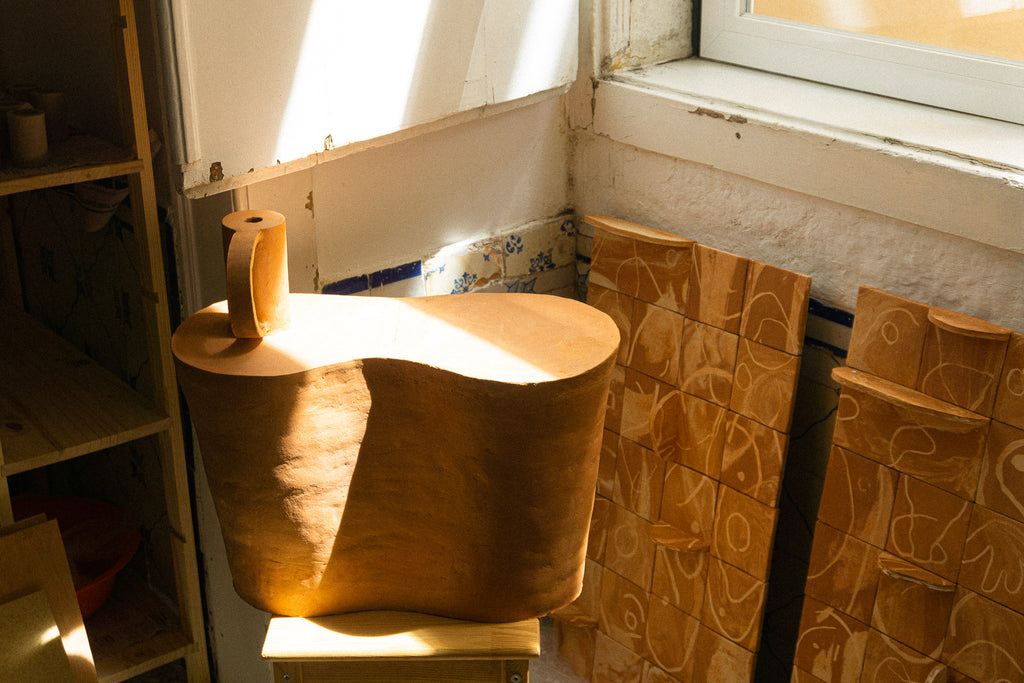
What is your background?
« I was fortunate to attend a public high school where the teachers were particularly dedicated, especially in the artistic field. Students had the opportunity to choose unique options such as watchmaking, screen printing, and ceramics. After my high school years, I decided to pursue studies in interior architecture. During that time, I was fully committed to my studies while also participating in various ceramics workshops here and there. Last year, I started contemplating the idea of doing ceramics full-time. »
How was the launch of your ceramics brand?
« I started my journey by occasionally hosting ceramic workshops through A(LOJA) organization. The experience proved to be very enriching, so I decided to continue, and now I organize workshops every week. Some workshops focus on ceramic modeling, while others combine tile-making (azulejos) with linocut printing.
Alongside the ceramic workshops, I began envisioning functional products such as coffee cups and vases. The very first piece I created was a red clay vase, commissioned by a friend. Another friend asked me to make coffee cups for her younger sister. Having already made prototypes of mini-vases, she saw them and said, "It would be great if we could use them for drinking coffee." I replied that I had never thought about it, but it was indeed an excellent idea. So I started transforming the existing vases into coffee cups. I took photos and shared them on Instagram, and people's reactions were very positive. Requests started pouring in, and that's how it all began.
Today, I am also delving into the creation of artistic and decorative objects, such as tiles. »
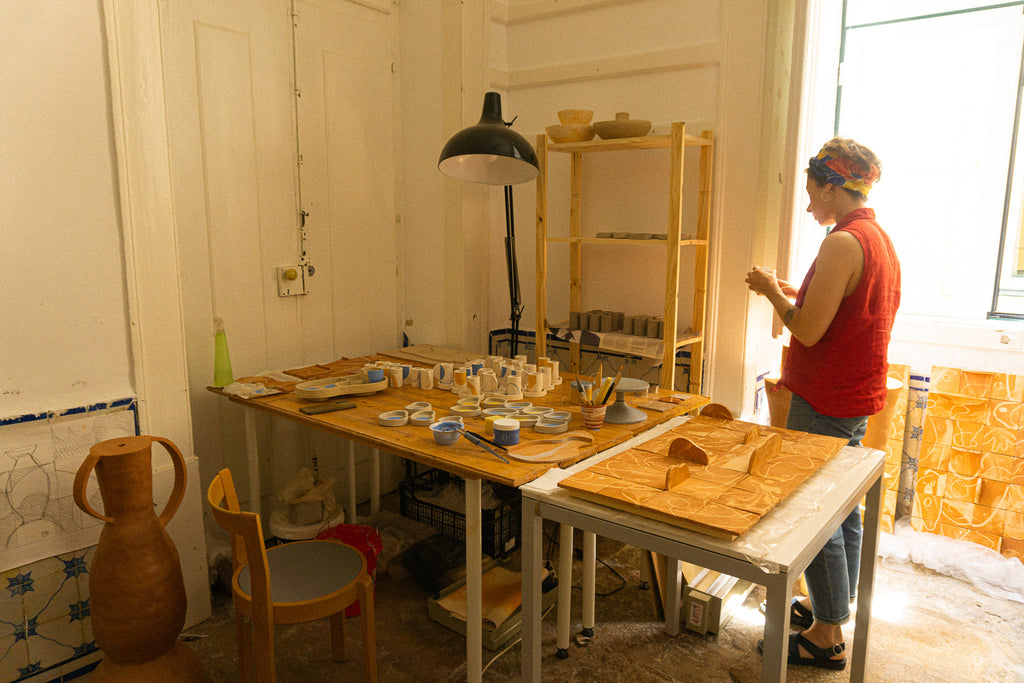
What is your favorite ceramic technique?
« My favorite technique to use is slab modeling. Among the various hand-modeling techniques, it's the one I prefer. I particularly use it to create coffee cups and saucers. This method is reminiscent of pastry making: I use a rolling pin to flatten the clay and achieve a relatively thin and even surface, just like rolling out dough for a pie crust! »
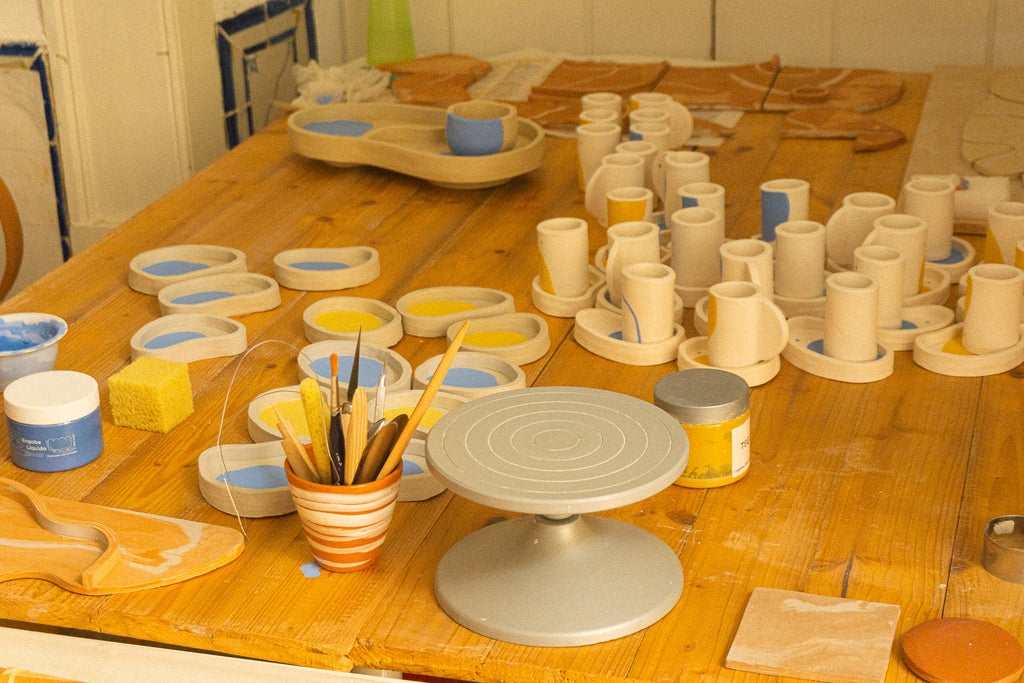
Is there a future project you would like to tell me about?
« I am currently working on developing a collection of furniture, lamps, and decorative pieces. What I love is working on large-scale pieces because it gives me a real sense of using my entire body in the process.
There's also an upcoming move for the studio. Currently, I work in two different locations: A(LOJA) in the Ajuda neighborhood, where I teach ceramics classes, and the Belém Library, where I have been fortunate enough to have a space for creating my pieces. I share this space with the artist Azure. We will continue to share a studio in Ajuda, which is currently undergoing renovations, but we should be able to move in within a month. This will allow me to merge my two spaces and work in a single location. »
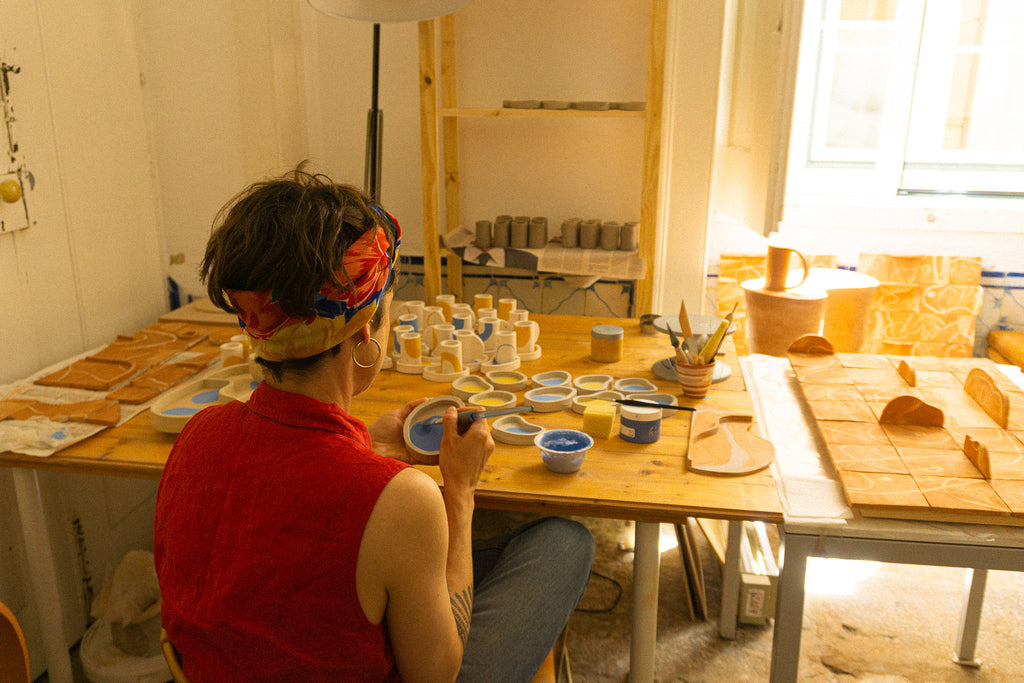
The ceramics classes are done in both English and Portuguese. If you're visiting Lisbon and would like to have a unique experience, you can book a workshop with Tatiana here.


Leave a comment